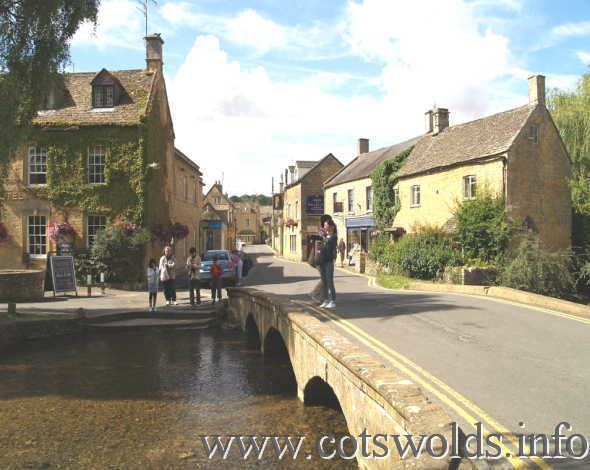Population 3,296 | OS grid reference SP167209 Local time Friday 9:34 AM | |
 | ||
Weather 6°C, Wind SE at 24 km/h, 100% Humidity Points of interest Birdland Park and Gardens, Cotswold Motoring Museum, Lodge Park and Sherborn, The Model Village, The Dragonfly Maze | ||
Go pr hd camera car bourton on the water is a civil parish in gloucestershire
Bourton-on-the-Water is a village and civil parish in Gloucestershire, England that lies on a wide flat vale within the Cotswolds Area of Outstanding Natural Beauty. The village had a population of 3,296 inhabitants at the 2011 census making it a rather large village as its population actually exceeds those of nearby Stow-on-the-Wold and Burford, both of which are considered small market towns.
Contents
- Go pr hd camera car bourton on the water is a civil parish in gloucestershire
- Map of Bourton on the Water Cheltenham UK
- Bourton on the water the cotswolds uk 2010 wmv
- Description
- Governance
- History
- Special designations
- Tourism
- Railway
- Notable people
- References
Map of Bourton-on-the-Water, Cheltenham, UK
Bourton on the water the cotswolds uk 2010 wmv
Description
The village of Bourton-on-the-Water is known for its picturesque High Street, flanked by long wide greens and the River Windrush that runs through them. The river is crossed by several low, arched stone bridges. These arched bridges have led to Bourton-on-the-Water being called the "Venice of the Cotswolds". Bourton-on-the-Water often has more visitors than residents during peak times of the tourist season.
Governance
An electoral ward of the same name exists. This ward includes Cold Aston in addition to Bourton. The total population of the ward taken at the 2011 census was 3,676.
Bourton-on-the-Water parish is bounded by the Fosse Way along the northwest, while the eastern boundary is defined by a series of brooks, namely: Slaughter Brook, the River Dikler and the River Windrush; the southern boundary is associated with a watercourse that runs between Bourton Hill and Broadwater Bottom.
History
The earliest evidence of human activity within the Bourton-on-the-Water area was found in the Slaughter Bridge gravel-spread, where Neolithic pottery (dated c. 4000 B.C.) was discovered. Moreover, excavations of the Salmonsbury Camp give evidence of almost continuous habitation through the Neolithic period, the Bronze Age and throughout England's Roman period (c. 43 to 410 A.D.). Ancient Roman pottery and coins discovered in the village itself give clear evidence of extended Roman occupation. By the 11th century a Christian church was established and the village had developed along the River Windrush much as it is today. Despite the long history of habitation almost every building is now of 17th century origin. The houses and shops in the village are constructed of the yellow limestone characteristic of the Cotswolds and they have the embellishments that make Cotswold architecture so picturesque: projecting gables, string-courses, windows with stone mullions and dripmoulds and stone hoodmoulds over the doors.
Special designations
The small historic core of Bourton-on-the-Water along with associated areas along the River Windrush have been designated a UK Conservation Area.
Salmonsbury Camp, a nearby Iron Age habitation, is designated a UK National scheduled monument (SAM 32392).
English Heritage designates 117 buildings within Bourton-on-the-Water as having Grade II or higher listed status.
Tourism
Bourton has a number of tourist attractions:
Long-distance footpaths and local walks start, finish or pass through Bourton-on-the-Water. One such route that begins its 100-mile route north is the Heart of England Way.
Bourton is also home to Bourton-on-the-Water Primary School and the Cotswold School, a co-educational comprehensive school.
Railway
Bourton-on-the-Water was first served by rail with the opening of the Bourton-on-the-Water Railway in 1862; this was a branch line from Kingham on the Oxford, Worcester and Wolverhampton Railway (OWWR). The station was situated just to the north of the village. The OWWR (and its branch) later amalgamated with the Great Western Railway (GWR), and in 1881, the branch was extended westwards, and formed part of the GWR's Banbury and Cheltenham Direct Railway. The station closed to passengers in 1962, and to goods in 1964.
Notable people
Actor Wilfrid Hyde-White was born in Bourton-on-the-Water in 1903, and is buried in the village's Water Cemetery. Racing cyclist Sharon Laws, who competed in the 2008 Summer Olympics, grew up in the village.
